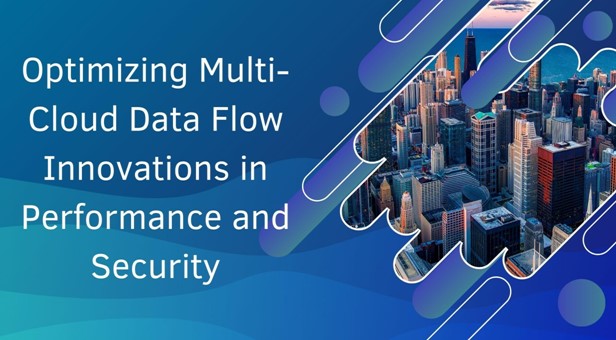The increasing reliance on multi-cloud environments has redefined how enterprises manage their digital infrastructures. Srujan Reddy Anugu, an expert in cloud computing, explores the technical advancements that optimize data flow across multiple cloud platforms. This article delves into innovative solutions that enhance security, reduce operational costs, and improve efficiency in multi-cloud ecosystems.
The Challenge of Multi-Cloud Data Flow
As organizations adopt multi-cloud strategies, they face unique challenges in integrating various cloud services while maintaining high performance and security. Traditional data transfer methods often result in high latency, increased operational expenses, and security vulnerabilities. Enterprises dealing with petabyte-scale data processing have long struggled with inconsistencies in performance and rising costs due to inefficient data routing.
Direct Cloud Interconnection: Enhancing Speed and Efficiency
One of the most effective solutions to multi-cloud optimization is direct cloud interconnection. By establishing dedicated network links between cloud providers, organizations can significantly reduce data transfer latency. Traditional public internet transfers often introduce inconsistencies and security risks, but direct interconnection minimizes these challenges. Studies have shown that such implementations achieve bandwidth utilization improvements of over 82%, ensuring faster and more reliable data movement across cloud platforms.
Data Fabric Implementation: A Unified Approach
Data fabric technology plays a crucial role in multi-cloud optimization by enabling seamless data management across distributed environments. By implementing data fabric solutions, enterprises can achieve more consistent performance levels across different cloud providers. This approach reduces data transfer costs by nearly 64% while improving resource allocation. A centralized data management framework allows organizations to handle complex workloads more efficiently and ensures that data is accessible without performance bottlenecks.
Intelligent Data Replication: Smarter Storage Strategies
Efficient data replication strategies are essential for maintaining data availability and minimizing redundancy. Intelligent replication utilizes predictive algorithms to determine optimal data placement, significantly reducing storage costs and improving retrieval speeds. Deployments leveraging this technique have reported an 89% improvement in application response times and a 92% decrease in redundant data storage. By reducing unnecessary cross-region data transfers, enterprises can save millions in operational costs annually.
Edge Computing Integration: A Game-Changer for Performance
Edge computing has emerged as a key player in optimizing data flow within multi-cloud environments. By processing data closer to its source rather than relying solely on centralized cloud servers, organizations can significantly cut down latency and bandwidth usage. Edge computing reduces cloud storage requirements by up to 77% and improves response times from an average of 248 milliseconds to just 37 milliseconds. This advancement is particularly beneficial for applications requiring real-time processing, such as IoT and AI-driven analytics.
Security and Compliance: Strengthening Data Protection
Ensuring robust security in a multi-cloud environment is a complex challenge. The heterogeneous nature of cloud platforms introduces multiple attack vectors and compliance risks. Zero Trust Architecture (ZTA) has emerged as an effective strategy to mitigate these threats, requiring strict authentication protocols for every interaction. Enterprises adopting ZTA frameworks experience a 96% reduction in data breach risks while maintaining seamless data accessibility. Additionally, end-to-end encryption methods safeguard sensitive information during data transfers, ensuring compliance with regulatory standards.
The Role of AI in Multi-Cloud Optimization
Artificial intelligence is revolutionizing how multi-cloud environments are managed. AI-driven predictive models can analyze traffic patterns, automate data routing, and optimize workload distribution. These advancements lead to an average cost reduction of 53% compared to traditional resource management approaches. By leveraging machine learning, organizations can dynamically adjust their cloud strategies in response to real-time demands, ensuring optimal performance with minimal waste.
The Future of Multi-Cloud Management
As cloud technologies continue to evolve, enterprises must remain proactive in adopting innovative optimization techniques. The integration of direct cloud interconnections, data fabric solutions, and AI-driven automation will define the next generation of multi-cloud computing. Organizations that implement these strategies effectively will benefit from reduced costs, enhanced security, and superior performance.
In conclusion, Srujan Reddy Anugu’s insights emphasize the necessity of advanced data management in multi-cloud optimization. By adopting these innovations, businesses can streamline operations, enhance security, and optimize performance. Navigating the complexities of multi-cloud ecosystems becomes more efficient, enabling organizations to achieve cost savings and improved reliability in an ever-evolving digital landscape.



































